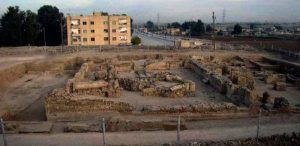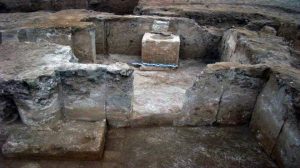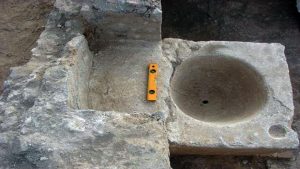Hasaka, SANA- At the heart of Hasaka city on the left bank of al-Khabour river, 1,700 meters from the meeting point of al-Khabour and Jaghjagh river lies an ancient hill that is one of the largest in the province.
Throughout years of methodical excavations, the national archeology expedition at the Hasaka Antiquities Directorate worked to identify the role this site had played in the distant past up to 2000 years BC, to verify the hypothesis that the hill once contained Magarisu city which dates back to the Assyrian period and was mentioned in the cuneiform tablets discovered at Dur-Katlimmu site, which is currently known as Tel Sheikh Hamad in Deir Ezzor.
Archeologist Abd al-Maseeh Bagdo, who had worked as Director of Hasaka Antiquities Directorate during the consecutive excavation seasons in the site between 2008 to 2011, said that three strata have been discovered at the hill; the first dates back to the Arab-Islamic era (700-1500 AD), the second dates back to the Byzantine civilization era (400-700 AD) and in which a cathedral dating back to the early days of Christianity was discovered and remained in use during the Umayyad and Abbasid eras, while the third stratus dates back to the Assyrian era, and in it they found part of a building dating back to the modern Assyrian age.
According to Bagdo, the cathedral was built of basalt stone and coated with plaster, measure 31 meters in height and 18 meters in width. It consisted of three parts: a courtyard with three halls paved with clay bricks and featuring basalt pillars with crowns bearing patterns and crosses, the sanctum sanctorum containing an altar and a well-preserved baptismal font, and a container of reliquaries housing the bones of martyrs killed during the Roman persecution of Christians, and the deacons room, while the third part included two grape presses where wine was made.
Hybah / Hazem Sabbagh
 Syrian Arab News Agency S A N A
Syrian Arab News Agency S A N A







